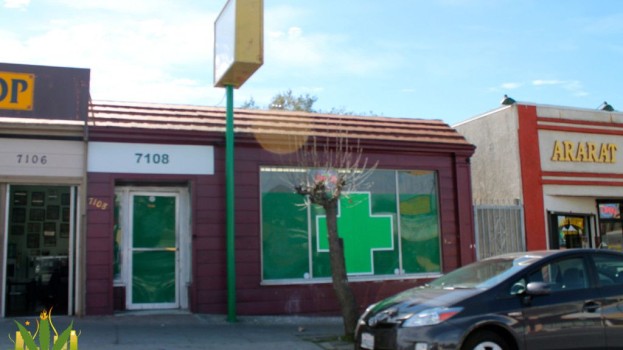Dispensary Laws in Los Angeles California – A Bit Hazy…
California’s Disputed Dispensaries
Dispensary laws in California are as hazy as nearly everything cannabis related in the golden state. The only thing that’s truly clear applies to local official’s authority to regulate collectives, which includes to ability to outright ban dispensaries within entire cities and counties. The law empowers municipalities to enact civil as well as criminal statutes to control co-ops in their proverbial backyards. While blanket bans seemingly contradict the safe and affordable access clause within Proposition 215, Governor Jerry Brown legitimized the practice when he signed AB 1300 in 2011. The governor’s localist stance likely stems from several lawsuits filed against the city of Los Angeles challenging its ability to close hundreds of clinics (see Robert Hill v City of Los Angeles, 2010). In essence, Brown simply codified the lower court’s rulings to the delight of LA City Attorney Carmen Trutanich. As Brown and Trutanich celebrate another victory on behalf of marijuana prohibition, patients statewide find themselves at the mercy of legislative whims.
Dispensaries Laws in LA County
Los Angeles acts as the epicenter for 420 controversy, which makes the city of angels an ideal case study on the bizarre legal ramifications of AB 1300. There are no citywide dispensary regulations on the books despite numerous attempts since the 2007 pre-interim control ordinance. The LA City Council basically surrendered to grassroots activists and abandoned its own “gentle ban” in favor of Measure F, a ballot initiative backed by ASA as well as the GLACA (Greater Los Angeles Collective Alliance) in 2012. Consequently, LA dispensaries are legal by default. But without a uniform policy in place many smaller communities within the city intervened and possibly overstepped by establishing separate guidelines for storefronts in their immediate vicinities.
Downtown vs the San Fernando Valley
The majority of dispensaries in Los Angeles proper sit in stark contrast to the chaos in the outlying areas, namely the San Fernando Valley. Downtown collectives present a squeaky clean image in front of city hall whereas the Valley earned a reputation worthy of a shady street pusher with post-ICO shops popping up on every corner. Of course, there are plenty of law abiding dispensaries in every part of the Valley. Still, the straight laced non-profit shops are definitely outnumbered.
Once an affluent suburb, the Valley’s socio-economic status currently reflects a diverse, largely working class population. The Valley spans roughly 12 square miles, and officials estimate hundreds of dispensaries exist within this confined space. Yet most of the remaining upper class districts are decidedly dismissive of medical marijuana patients’ rights. For instance, Councilman and anti-pot crusader Mitchell Englander (12th District) boasts about closing down all the “illegal” storefronts under his watch on his website. Englander’s claims are true with respect to wiping out the handful of dispensaries in Chatsworth; however, Reseda is rife with questionable shops the Councilman would rather ignore than acknowledge. Nearby Woodland Hills also expressed an intent to eradicate co-ops entirely, yet shops in Sherman Oaks face no such threats.
Other bans are the byproduct of neighborhood council complaints to sympathetic legislators. Eagle Rock dispensaries fell victim to an overzealous man named Michael Larsen and his cronies. Instead of working with residents to weed out the bad apples, Larsen led a blind ideological battle that ended up closing Cornerstone Research Collective. CRC played by the rules on all accounts, and its fate illustrates the arbitrary nature of localist control.
The West Hollywood Model
West Hollywood, on the other hand, allows a certain number of dispensaries to operate so long as they abide by time, place, and manner restrictions. The WeHo council created its ordinance with input from upstanding members of the MMJ community, such as ASA leader Don Duncan. Unfortunately, the city’s authorizations didn’t stop the DEA from raiding 2 approved dispensaries in 2011. The federal government’s actions contradict the premise behind AB 1300, which demonstrates the futility of the so-called localist approach.
About Katherine Tattersfield
Humboldt Relief Photographer/Webmaster since 7/2010. Katherine is a professional copywriter responsible for all of the content, including photography, graphics, and text, on the HR website unless otherwise specified. She also handles HR's social communities. She earned her B.A. in Political Science from California State University, Northridge, and works at PrintFirm.com when she's not volunteering for HR. Connect with her on:
Related posts
-
Marijuana Is Still Illegal By Federal Law, ...
January 11, 2015
-
Northern California tribe plans marijuana farm
January 10, 2015
-
Concentrated cannabis qualifies as medical marijuana, California ...
December 26, 2014
-
Residents Riled Over Christmas Display of Pot-Smoking ...
December 23, 2014











